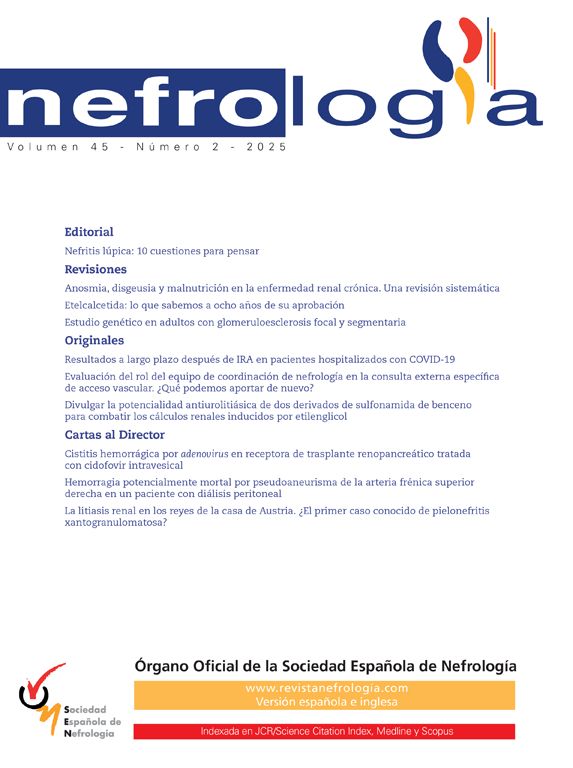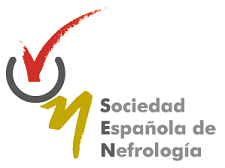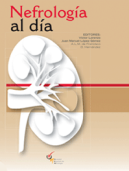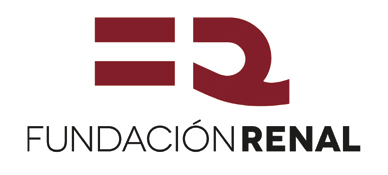In response to Drs. Yong Wang and Wei Zhou, we would like to express our gratitude for their interest in our national ERCOS study1 and for their additional contributions. We all agree that this is another critical area of patient care that warrants further exploration as highlighted in the recent KDIGO Chronic Kidney Disease-Mineral and Bone Disorder (CKD-MBD) Controversies Conference.2 Notably, a new conceptual framework was proposed to move to a framework of two clinical syndromes in adults: CKD-associated osteoporosis (OP) and CKD-associated cardiovascular disease. This approach aims to advance towards a personalized care in adults with CKD-MBD.2
The ERCOS study (Spanish acronym for CKD-OP)1 was designed to intentionally include the profile of patients with CKD G3-5D diagnosed of densitometric OP and/or fragility fractures. By focusing on patients in whom these two highly prevalent conditions already coexist (as an inclusion criterion), the study does not allow conclusions to be drawn about the prevalence of OP in patients with CKD. Our results confirmed a previously suspected general therapeutic nihilism, coupled with a notably low sensitivity/awareness of nephrologists regarding OP, despite recent important updates in our guidelines, consensus statements and calls to action.2–5 We agree with the authors that including patients with CKD without prior OP diagnosis could provide a more comprehensive understanding of bone health across the entire CKD population. In fact, in our manuscript, we specifically emphasized that our results cannot be extrapolated to the entire population and must be interpreted with consideration of other potential biases, such as the small sample size (particularly on dialysis patients) and the involvement of centres and physicians with a specific interest in these conditions, among others.
The authors also suggest that including data from recently published studies on OP treatment outcomes in different CKD populations would have been interesting. Their data on treatment outcomes from recent studies is highly valuable and complements previous publications in Nefrologia and other journals.2,5–7 However, we would like to reiterate that this was not the aim of our study though it could represent a valuable opportunity for a focused and comprehensive review.
Finally, the authors stated that incorporating emerging options such as romosozumab could provide a broader overview of available treatments. We fully agree, but unfortunately, when the ERCOS study was conducted, neither romosozumab nor abaloparatide was available in Spain. In fact, given the significant high prevalence of adynamic bone disease among CKD patients, OP treatment should not be limited to antiresorptives; anabolic or dual-action therapies (teriparatide, abaloparatide, romosozumab, etc.) should also be considered, although data on these agents remains even more limited (e.g. differences in femoral bone density benefits between abaloparatide and teriparatide, and warnings persist for romosozumab).8,9 Thus, knowledge of bone turnover may also influence the choice of bone-targeted therapies.2 In most cases, bone formation and resorption markers suffice for assessing bone turnover.10 However, nephrologists should revive the practice of bone biopsies, at least in cases of complex bone diseases. While treatment decisions for most CKD patients can proceed without biopsies, they remain important for mineralization defects or complex bone diseases not identifiable noninvasively, particularly when bone markers are not aligned.2,10
In conclusion, we also fully agree with Drs Yong Wang and Wei Zhou in looking forward to future research that advances the care for CKD patients. This begins with the early diagnosis, classification and codification of patients with CKD, balancing renalism with therapeutic nihilism, and recognizing that bone and mineral disorders in CKD, including CKD-associated OP, may impact cardiovascular health and ageing. Personalized treatment approaches should especially be considered in CKD patients,2 not only for those already diagnosed with OP and/or fragility fractures but also for those at risk. Given the challenges of conducting necessary randomized clinical trials on this issue, we propose an alternative approach: the prospective registration of key information by relevant scientific societies. This strategy could serve as an intermediate step in generating actionable knowledge and addressing current evidence gaps. Ultimately, we must remember that the best treatment for CKD-MBD is preventing the progression of CKD using the therapies already available.
FundingThis study was funded by Laboratorios Rubió.
Conflicts of interestDr. Jordi Bover Sanjuán declares that he has received honoraria for conferences, consultancies and/or travel grants from Abbvie, Amgen, AstraZeneca, Bayer, CSL-Vifor, GSK, Rubió and Sanofi. Dr. Carlos Gómez declares having received fees for conferences and consultancies from Amgen, Italfármaco, FAES, Gedeon-Richter, Rubió, UCB and Sanofi. Dr. Enrique Casado declares having received fees for conferences and consultancies from Eli Lilly, Amgen, UCB, Theramex, Italfármaco, Gedeon-Richter, STADA, Bayer, GPPharma and Rubió. Dr. Juan Navarro states that he has received lecture and consulting fees from Abbvie, Amgen, Vifor Pharma, Rubió and Sanofi.






